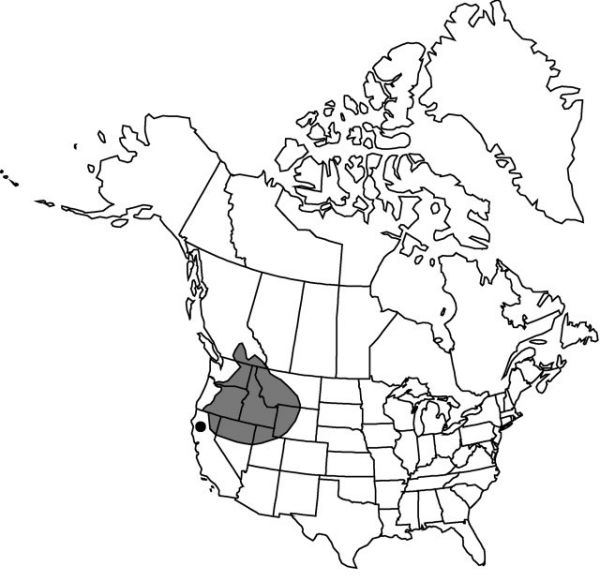Difference between revisions of "Fritillaria pudica"
Syst. Veg. 2: 64. 1825.
FNA>Volume Importer |
imported>Volume Importer |
||
| (6 intermediate revisions by 2 users not shown) | |||
| Line 8: | Line 8: | ||
}} | }} | ||
|common_names=Yellow fritillary | |common_names=Yellow fritillary | ||
| − | |basionyms={{Treatment/ID/ | + | |special_status={{Treatment/ID/Special_status |
| + | |code=F | ||
| + | |label=Illustrated | ||
| + | }}{{Treatment/ID/Special_status | ||
| + | |code=E | ||
| + | |label=Endemic | ||
| + | }} | ||
| + | |basionyms={{Treatment/ID/Basionym | ||
|name=Lilium pudicum | |name=Lilium pudicum | ||
|authority=Pursh | |authority=Pursh | ||
| + | |rank=species | ||
| + | |publication_title=Fl. Amer. Sept. | ||
| + | |publication_place=1: 228, plate 8. 1814 | ||
}} | }} | ||
|synonyms= | |synonyms= | ||
| Line 27: | Line 37: | ||
|elevation=0–2100 m | |elevation=0–2100 m | ||
|distribution=B.C.;Calif.;Idaho;Mont.;Nev.;Oreg.;Utah;Wash.;Wyo. | |distribution=B.C.;Calif.;Idaho;Mont.;Nev.;Oreg.;Utah;Wash.;Wyo. | ||
| − | |discussion=<p>Fritillaria pudica is highly variable and has one of the widest distributions of all the North American species of the genus. It was commonly used as food by Native Americans. The small bulbs were often eaten raw, and the larger ones were either dried or cooked in various ways. The Okanogan-Colville tribe used the appearance of F. pudica flowers as a sign that spring had arrived, and the Shuswap tribe used them in bouquets.</p> | + | |discussion=<p><i>Fritillaria pudica</i> is highly variable and has one of the widest distributions of all the North American species of the genus. It was commonly used as food by Native Americans. The small bulbs were often eaten raw, and the larger ones were either dried or cooked in various ways. The Okanogan-Colville tribe used the appearance of <i>F. pudica</i> flowers as a sign that spring had arrived, and the Shuswap tribe used them in bouquets.</p> |
|tables= | |tables= | ||
|references= | |references= | ||
| Line 36: | Line 46: | ||
-->{{#Taxon: | -->{{#Taxon: | ||
name=Fritillaria pudica | name=Fritillaria pudica | ||
| − | |||
|authority=(Pursh) Sprengel | |authority=(Pursh) Sprengel | ||
|rank=species | |rank=species | ||
| Line 50: | Line 59: | ||
|publication title=Syst. Veg. | |publication title=Syst. Veg. | ||
|publication year=1825 | |publication year=1825 | ||
| − | |special status= | + | |special status=Illustrated;Endemic |
| − | |source xml=https:// | + | |source xml=https://bitbucket.org/aafc-mbb/fna-data-curation/src/2e0870ddd59836b60bcf96646a41e87ea5a5943a/coarse_grained_fna_xml/V26/V26_296.xml |
|genus=Fritillaria | |genus=Fritillaria | ||
|species=Fritillaria pudica | |species=Fritillaria pudica | ||
Latest revision as of 21:14, 5 November 2020
Bulb scales: large 4–5; small 85–125. Stem 0.7–3 dm. Leaves 2–8, subopposite to scattered, 3–20 cm; blade linear to lanceolate. Flowers nodding; tepals yellow to orange, some lined brown, aging to brick red, 0.8–2.2 cm; nectaries near base of tepals, green, elliptic to round; style unbranched. Capsules angled. 2n = 24, 26.
Phenology: Flowering Mar–Jun.
Habitat: Grassy, shrubby, or wooded slopes
Elevation: 0–2100 m
Distribution

B.C., Calif., Idaho, Mont., Nev., Oreg., Utah, Wash., Wyo.
Discussion
Fritillaria pudica is highly variable and has one of the widest distributions of all the North American species of the genus. It was commonly used as food by Native Americans. The small bulbs were often eaten raw, and the larger ones were either dried or cooked in various ways. The Okanogan-Colville tribe used the appearance of F. pudica flowers as a sign that spring had arrived, and the Shuswap tribe used them in bouquets.
Selected References
None.
